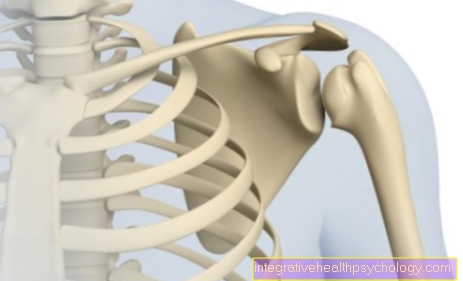The shoulder prosthesis
definition
The shoulder prosthesis is a artificial joint replacement of the shoulder joint. During the implantation, injured, worn or joint surfaces destroyed by diseases are replaced as part of an operation.
Different variants of shoulder prostheses are available to the surgeon. So there are full prostheses (Total shoulder prosthesis) or those that only replace the articular surface of the upper arm. The decision is made after considering the needs and the existing damage to the patient.

Indications: When does a shoulder prosthesis make sense?
An important indication for the shoulder prosthesis is osteoarthritis of the shoulder joint (Omarthrosis). In osteoarthritis, the joint cartilage is worn away, which is essential for free mobility and pain-free use. Osteoarthritis can
- age-related
- after injuries
- after incorrect loads or
- due to other underlying diseases
be evoked. Further indications are broken bones that have destroyed the shoulder joint so that its functionality is no longer guaranteed. Less often, prostheses have to be used due to the death of the humerus head (Humeral head necrosis) or because of tumors in the upper arm.
Contraindications: what speaks against a shoulder prosthesis?
Since the insertion of a shoulder prosthesis is a major procedure that destroys the natural joint, conservative measures such as physiotherapy should always be carried out before the decision in favor of an operation.
Care should be taken with conditions such as osteoporosis, which soften the bones. There is a risk that the prosthesis will not hold or that it will loosen prematurely.
Risks in the operation
In general, a distinction is made between risks that can occur during an operation and risks that are preferably possible after the prosthesis has been successfully implanted.
- About the risks during The operation includes, on the one hand, the very general operational risks, such as accidental risks Injury to vascular and nerve structures, hurting the surrounding area tissue (such as the humerus and shoulder blade) and that Introduction of germs in the operating area.
- After the operation it can become too Secondary bleeding, wound infections and wound healing disorders come. The risk of a postoperative one thrombosis or Pulmonary embolism to suffer is relatively minor after a shoulder operation, as it is possible to get up and move quickly.
Rare, but extremely undesirable, are risks such as infection of the inserted prosthesis itself with subsequent loosening of the prosthesis, so that a another operation necessary can be. Slipping of the material or even the prosthesis sliding out of the joint guide (dislocation) are also among the risks after the operation.
Surgery and aftercare
In order to reach the shoulder joint for the implantation of a Schuler prosthesis, a 15 cm long skin incision carried out. The surgeon away in the joint damaged tissue and possibly inflamed bursa to prepare the bone for implantation, depending on the type of prosthesis.
The length of the operation depends on the type of prosthesis, inverse shoulder prostheses are made within two to three hours implanted, the other shoulder prosthesis operations are with one to two hours shorter. The operation is performed under general anesthesia; a pain catheter can also be placed, which remains in the patient for a few days and guarantees efficient pain treatment.
After the operation, the affected arm is placed in a sling for a few weeks to protect the shoulder. As a rule, the first movements can be performed after two to three days under the guidance of a physiotherapist. The hospital stay lasts approximately five days. The patients can then usually go about their everyday life with the help of the new shoulder prosthesis, but of course it may be that activities such as brushing teeth have to be carried out with the non-operated side at the beginning.
A shoulder prosthesis does not involve high loads such as lifting heavy objects. This is followed by outpatient physiotherapy with exercises to strengthen the muscles in order to restore the mobility of the shoulder joint. Patience and commitment on the part of the patient are required here, since, above all, lifting the arm above the horizontal is often only possible again after several months without problems.
How long does a shoulder prosthesis surgery take?
The surgery to implant a shoulder prosthesis usually takes between an hour and two. During this time, the patient is either under general anesthesia or - as a safe alternative - locally anesthetized in the area of the shoulder and arm (Plexus anesthesia).
A general duration of the operation cannot be given, as it always depends on the following factors:
- Surgical technique of the respective surgeon
- Extent of shoulder joint damage
- individual anatomy of the patient
Everyday life with a shoulder prosthesis
Although shoulder prostheses are becoming more and more valuable, they never come close to the quality of a real joint. In order for the new joint to last as long as possible, a few things must be observed. The patient should not make any jerky movements, Sports like boxing or tennis are not recommended. Furthermore, the patient should not lift heavily and distribute the weight between both arms. Long overhead work should be avoided and if you fall on the shoulder prosthesis, an X-ray should be taken as a check.
It is strongly recommended to gently train the muscles of the shoulder and mobility by stretching; in physiotherapy, the patient is shown the necessary exercises.
Sports with uniform movements are unproblematic for the shoulder prosthesis, such as Swimming, cycling or dancing.
How long does a shoulder prosthesis last?
How long a shoulder prosthesis will last in total is not exactly to the day and also not that easy to say in general. The service life of the material used depends on the one hand on which material or which type of prosthesis was used, how high the degree of shoulder joint damage is / was and to what extent the shoulder joint is stressed after the operation.
On average, it can be expected that the Prosthetic material replaced after 10 years or more must be, as the first signs of wear and tear show.
What degree of disability does a shoulder prosthesis result in?
Whether or not there is a degree of disability after the implantation of a shoulder prosthesis depends largely on the healing process. After an uncomplicated operation and adequate care and subsequent therapy, no or only very little restriction of movement in the joint is to be expected. Continuous movement and strengthening training in rehabilitation is important in order to achieve the best possible result from the operation.
If, contrary to expectations, there are severe restrictions on movement in the joint after an implantation (e.g. due to complications after an operation), a medical report should be obtained with which the degree of the disability can be assessed.
The shoulder cap prosthesis
A shoulder cap prosthesis is an artificial resurfacing device that is used to replace a destroyed head of the humerus. It is (mostly) a metal cap that is attached to the ball of the humerus head to cover abrasion of cartilage or bone. One also speaks of one Hemiprosthesis or Hemiarthroplasty, because in contrast to a full shoulder prosthesis, the humeral head and the socket do not have to be replaced.
A shoulder cap prosthesis can be anchored with the help of bone cement, but cement-free surgical techniques are also possible. A shoulder cap prosthesis is mainly used in
- rheumatic diseases of the shoulder joint (Rheumatic shoulder)
- Necrosis of the humerus (Humeral head necrosis) or
- Shoulder wear (Omarthrosis).
A shoulder cap prosthesis serves as a replacement for the surface of the humerus head.
Indication for a shoulder cap prosthesis
The implantation of a shoulder cap prosthesis can usually achieve good pain reduction. The range of motion of the shoulder can be increased by a targeted follow-up treatment compared to the state before the operation. However, if the shoulder joint is already fixed in place before a shoulder cap prosthesis is used, the intervention cannot restore mobility.
Shoulder cap prostheses are installed either in combination with a shoulder joint socket replacement or (mostly) without an artificial joint socket.
Surgical procedures and risks of a shoulder cap prosthesis
The shoulder joint is opened either via an anterior or an upper access (reaching the shoulder joint as gently as possible) and the humerus is exposed. Then you place a wire in the center and select the appropriate prosthesis size for the cap. A millimeter-wide layer of the worn surface of the humerus is removed with a special burr so that the implant can be applied.
If necessary, a joint socket is also implanted. Either with bone cement or cement-free by means of a press fit, the shoulder cap prosthesis is now inserted and then the humerus head with the prosthesis is set back into the shoulder socket. This is followed by a detailed examination of the walking behavior of the shoulder cap prosthesis in the joint socket and the stability of the shoulder. The surgical wound is sutured again and a shoulder splint is put on.
In general, the rate of complications from the installation of shoulder cap prostheses is low. The general risks apply as for any operation:
- thrombosis
- embolism
- Bleeding
- infection
- Vascular or nerve damage
- Wound healing disorders
There is also the risk that the prosthesis will dislocate (luxate) could.
Advantages and disadvantages of a shoulder cap prosthesis
1. Advantages
In contrast to a complete, artificial shoulder joint replacement, only a very small part of the humerus head has to be removed with a shoulder cap prosthesis. As a rule, only the surface of the upper chamber is pre-milled, which spares healthy bones. The upper am bone does not have to be opened with the shoulder cap prosthesis, as the prosthesis does not have a stem that has to be inserted into the upper arm shaft.
Another advantage of the shoulder cap prosthesis are the small surgical access points; under certain circumstances the prosthesis is only used with the help of minimally invasive surgical techniques ("Keyhole surgery"). In addition, if the shoulder cap prosthesis loosens, a completely artificial shoulder joint can still be used after years.
2. Disadvantages
However, a shoulder cap prosthesis requires a sufficiently large support surface. This means that the damage to the humerus head must not be too great for a shoulder cap prosthesis to be installed. In individual cases, this can only be determined during the operation, which is why you have to switch to another, more suitable shoulder prosthesis.
Speak against the installation of a shoulder cap prosthesis:
- bacterial infections
- Paralysis or damage to the muscles around the shoulder (Rotator cuff)
- osteoporosis
- Bone instability and
- Bone death (Osteonecrosis)
Follow-up treatment of a shoulder cap prosthesis
Immediate loading of the new shoulder joint is generally possible. As a rule, during the one-week hospital stay after the shoulder cap prosthesis has been installed, the shoulder is cooled, the wound is checked and painkillers are administered. After 10 to 12 days, the stitches can be pulled.
A shoulder brace should be worn for about 6 weeks. During this time, the passive mobility of the shoulder should be practiced with the help of physiotherapy. After removing the shoulder splint, active exercises can be performed with the shoulder. Sports that put pressure on the shoulders (such as football, handball, downhill skiing or tennis) are unfavorable for the time after the shoulder cap prosthesis has been used.
Summary
Since people depend on a well-mobile shoulder in everyday life, the limitations of illness are very great. The shoulder prosthesis can give patients greater freedom of movement and thus improve their quality of life. Since the natural joint is destroyed during the operation, conservative measures should be exhausted.
It can take a long time until good and painless mobility is possible after the shoulder prosthesis has been implanted. Which shoulder prosthesis is chosen must be decided individually based on the patient's medical history and corresponding preliminary examinations.
Recommendations from our editorial team
You can find further topics on the shoulder prosthesis here:
- The inverse shoulder prosthesis
- The shoulder arthrosis
- Osteoarthritis of the shoulder
- Shoulder joint instability
- Shoulder pain
- Shoulder dislocation




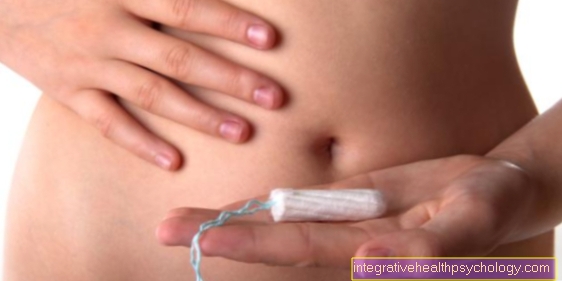




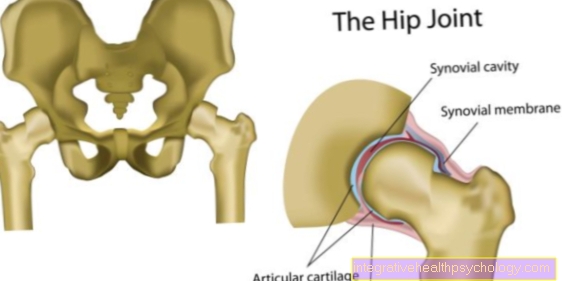


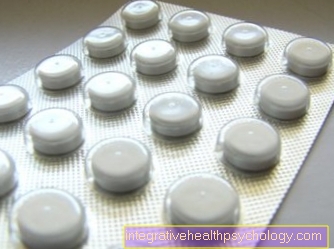

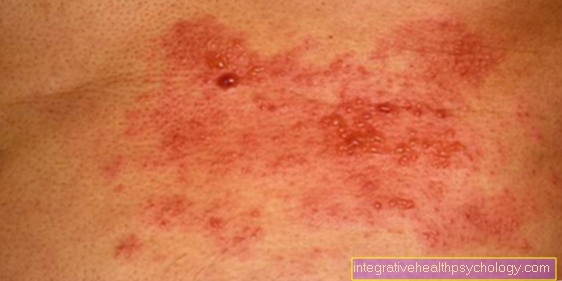





.jpg)





